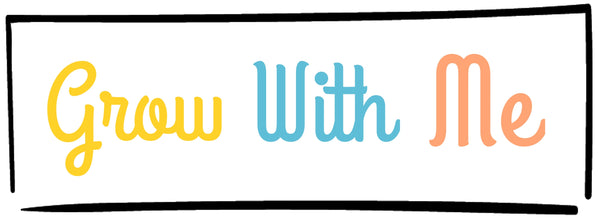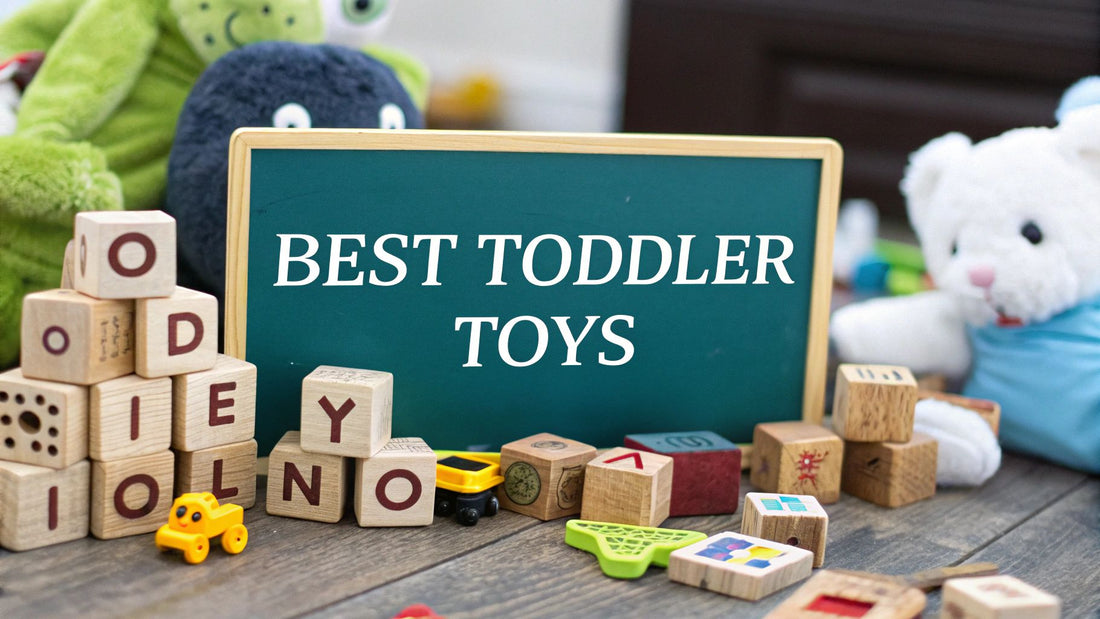
Best Toys for 1 and 2 Year Olds
Share
Welcome to the incredible world of toddler play! It’s a place where stacking a wobbly tower of blocks or scribbling a crayon masterpiece is more than just fun—it’s a giant leap in your child's development. This guide is all about looking past the idea of toys as simple entertainment and seeing them for what they truly are: essential tools for the most important job your one or two-year-old has.
Think of their play area not just as a room filled with stuff, but as their very own laboratory for discovery.
The Power of Play for Developing Minds
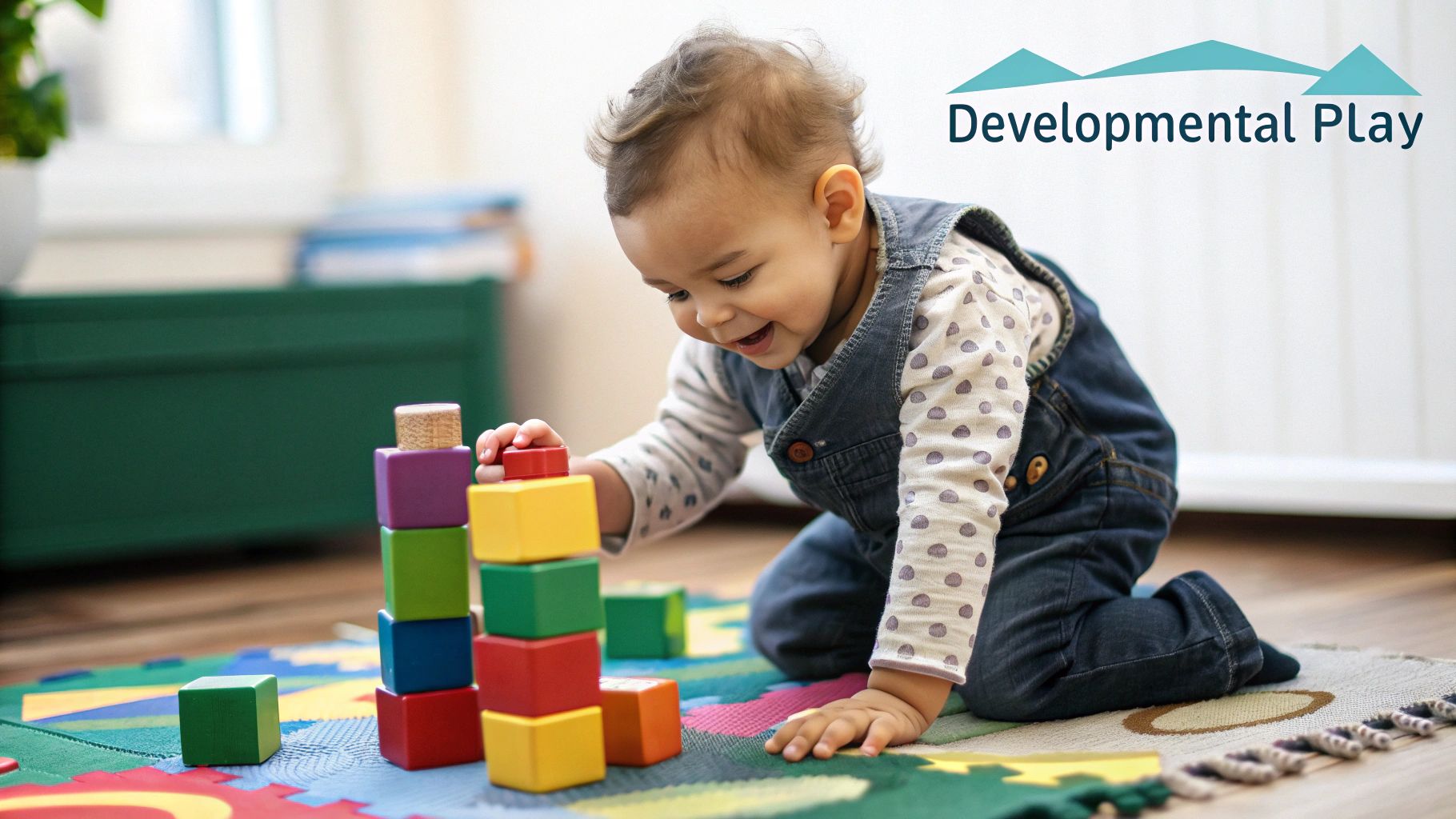
For a one or two-year-old, play isn’t just a way to kill time; it’s the bedrock of their learning and growth. Every single interaction—from gripping a chunky crayon to pushing a toy car across the floor—is busy building critical neural pathways in their rapidly growing brain. This stage is a genuine explosion of discovery, where the simplest actions lead to profound understanding.
I like to think of a toddler’s brain as a busy construction site, and play is the hard-working crew. Every time they stack blocks, they’re getting a hands-on lesson in gravity and balance. When they sort shapes, they’re laying the groundwork for future maths skills. It’s a dynamic, hands-on process that turns pure curiosity into real-world capability.
Connecting Toys to Milestones
This is where the right toys come in. They aren’t just objects; they are catalysts for development. They are the very tools your toddler uses to figure out their world, practise new skills, and let their budding imagination run wild. The secret is to choose toys that match where they are developmentally, offering just enough of a challenge to keep them hooked without tipping over into frustration.
This guide will help you connect those dots between play and progress. We'll explore how certain types of toys nurture essential skills, helping you make sure every playtime is as purposeful as it is joyful. By understanding this connection, you can feel confident you're choosing toys that are both fun and truly foundational for your child's growth. For a deeper dive into this, check out our guide to developmental toys for toddlers.
The most effective toys are often the simplest. An open-ended toy, like a set of wooden blocks, can become a castle, a car, or a telephone, inviting far more creativity than a toy with a single, pre-determined function.
What You Will Learn
Throughout this guide, we'll move from the "why" to the "what," giving you a clear and practical framework for choosing the best toys. You'll walk away with a solid understanding of:
- Key Developmental Areas: We’ll break down how toddlers grow cognitively, physically, and emotionally through the simple act of play.
- Essential Toy Categories: You’ll discover the must-have types of toys that support a well-rounded developmental journey.
- Safety and Material Choices: Learn what to look for on labels and in materials to ensure your child’s play space is safe and healthy.
- Stage-Based Selection: Get specific advice on matching toys to your child's age, from 12 months up to two years and beyond.
By the end, you’ll be ready to build a toy collection that doesn't just entertain but genuinely supports your little one's incredible journey of discovery.
How Toddlers Learn and Grow Through Play
To us, it might just look like adorable chaos, but for a one or two-year-old, playtime is serious business. It’s the engine driving their incredible progress—a full-time job where every dropped block and scribbled line is a lesson learned. This period isn't just about getting bigger; it's about building the entire blueprint for their future.
Think of their brain as a new city under construction. Every play experience, whether it's stacking a tower, fitting a puzzle piece, or babbling to a teddy bear, is like laying down a new road or wiring a new neighbourhood. These connections, formed through active, hands-on discovery, are what turn a collection of streets into a thriving metropolis of skills and knowledge.
The Four Pillars of Playful Development
Play isn't a single activity; it’s a rich, multi-faceted experience that nurtures your child's growth in several key areas all at once. When you understand these pillars, you start to see the "why" behind their seemingly random actions and can better choose the right toys for 1 and 2 year olds to support their amazing journey.
- Motor Skills Mastery: This is the most visible area of growth. It covers both gross motor skills—like mastering walking, attempting a run, and climbing the sofa—and the more delicate fine motor skills, such as the pincer grasp needed to pick up a single pea.
- Cognitive Leaps: This is all about their thinking, reasoning, and problem-solving. When your toddler finally figures out that the square block only fits in the square hole, that’s a huge cognitive win. It’s their first real foray into logic and spatial awareness.
- The Language Explosion: Between one and two, children often go from pointing and babbling to forming simple sentences. Play provides the perfect context for this, as they learn object names, follow simple instructions ("pass me the red block"), and begin to express their own ideas.
- Social and Emotional Awareness: Play is the very first training ground for social skills. It's where they learn about cause and effect ("If I take my friend's toy, they cry"), experiment with empathy by caring for a doll, and start the long journey of understanding how to share and take turns.
These pillars rarely develop in isolation. Pushing a ride-on toy (gross motor) while navigating around furniture (cognitive) and making "vroom" sounds (language) is a perfect example of how play weaves every aspect of their growth together.
To help you connect these stages to the right kinds of play, here's a quick look at some of the major milestones you'll see between ages one and two.
Developmental Milestones at a Glance: Ages 1 to 2
| Developmental Area | What to Look For in a 1-Year-Old | What to Look For in a 2-Year-Old |
|---|---|---|
| Gross Motor Skills | Pulling up to stand, cruising furniture, maybe taking first steps. Can sit without support. | Walking confidently, starting to run, kicking a ball, climbing onto furniture. |
| Fine Motor Skills | Using a pincer grasp (thumb and forefinger), banging two objects together, putting things in containers. | Stacking a tower of 4 or more blocks, scribbling with a crayon, turning single pages of a book. |
| Language & Communication | Babbling with intonation, responding to their name, saying "mama/dada" and a few other words. Uses gestures. | Using simple 2-4 word sentences, pointing to named body parts, following simple instructions. |
| Cognitive Skills | Exploring objects by shaking and banging them, finding hidden objects, imitating gestures. | Sorting shapes and colours, completing simple puzzles, engaging in basic pretend play (e.g., feeding a doll). |
| Social & Emotional | Showing stranger anxiety, crying when parents leave, repeating sounds to get attention, offering you a toy. | Showing more independence (and defiance!), imitating others, getting excited around other children. |
Remember, every child develops at their own pace, but this table gives you a great framework for what to watch for as you choose their next favourite toy.
From Grasping to Engineering Tiny Projects
Let’s look at how a simple toy translates into complex learning. Take a set of basic stacking blocks. To us, it’s just a toy. To a one-year-old, it’s a whole engineering project.
First, they have to use their fine motor skills to successfully grasp a block. Then, they use hand-eye coordination to place it on top of another. As the tower gets higher, they're running mini physics experiments, learning about balance, gravity, and stability. When it inevitably tumbles, they learn about cause and effect in the most delightful way possible.
Play is often talked about as if it were a relief from serious learning. But for children, play is serious learning. Play is really the work of childhood.
This principle is true for all types of play. Solving a chunky puzzle isn't just about matching shapes; it's about pattern recognition. 'Feeding' a doll isn't just mimicking; it's practising empathy. Every interaction is a stepping stone.
This understanding is reflected in the market, too. The UK toy market, which includes a huge range of toys for 1 and 2 year olds, has reached a value of around £3.1 billion. It’s projected to grow to over £4.6 billion, with the under-five segment expanding even faster. This trend shows a growing appreciation among parents for the vital role of purposeful play. You can explore more about these market trends and their drivers in the full report.
Visualising Toddler Toy Preferences
As toddlers develop, their play preferences naturally evolve. This chart shows a popular breakdown of toy categories for two-year-olds, giving us a peek into what captures their attention.
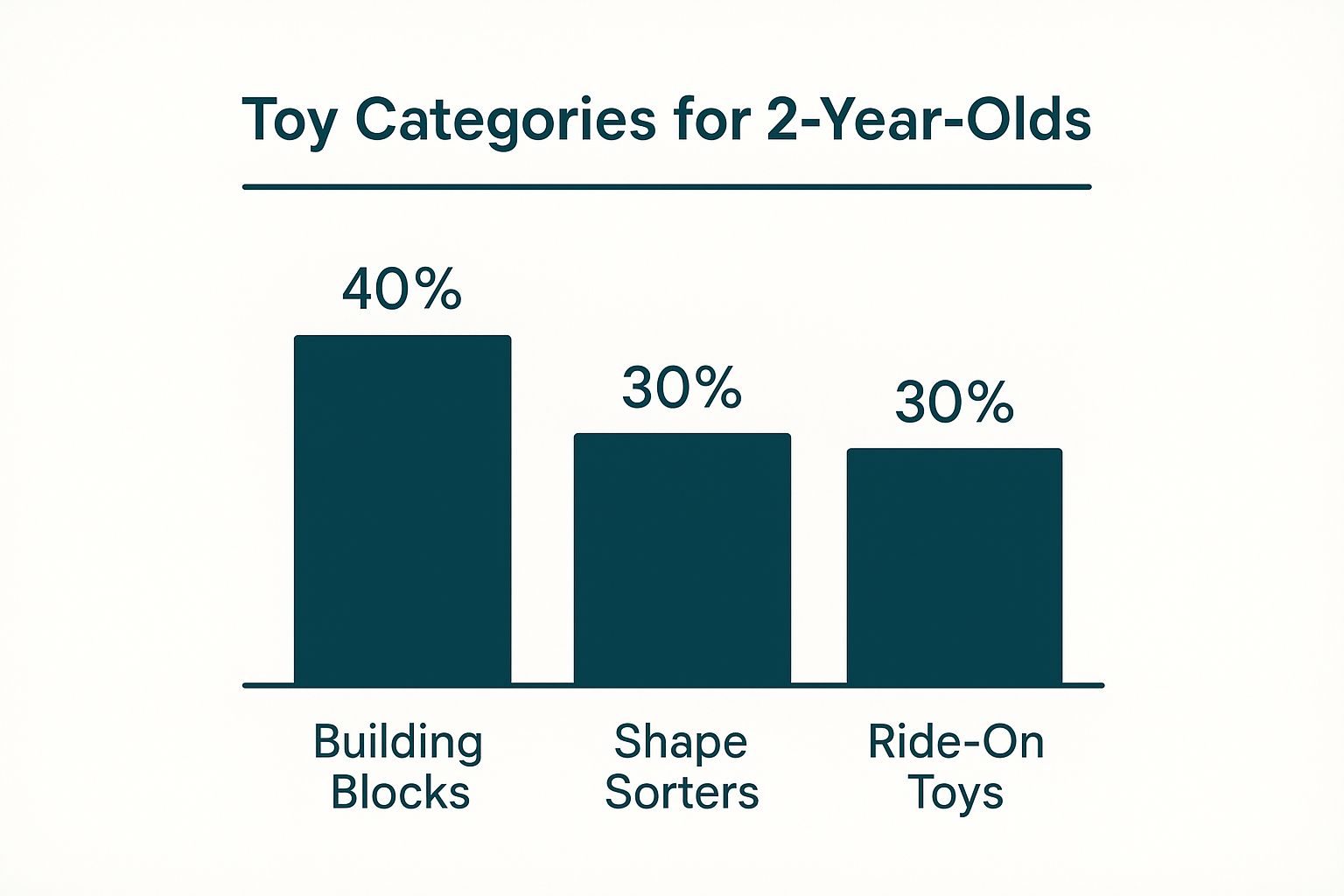
What's clear from this is the balanced interest between toys that build cognitive and fine motor skills (blocks and sorters) and those that develop gross motor skills and coordination (ride-on toys). Hitting this balance is the key to supporting well-rounded development.
Exploring the Best Toy Categories for Toddlers
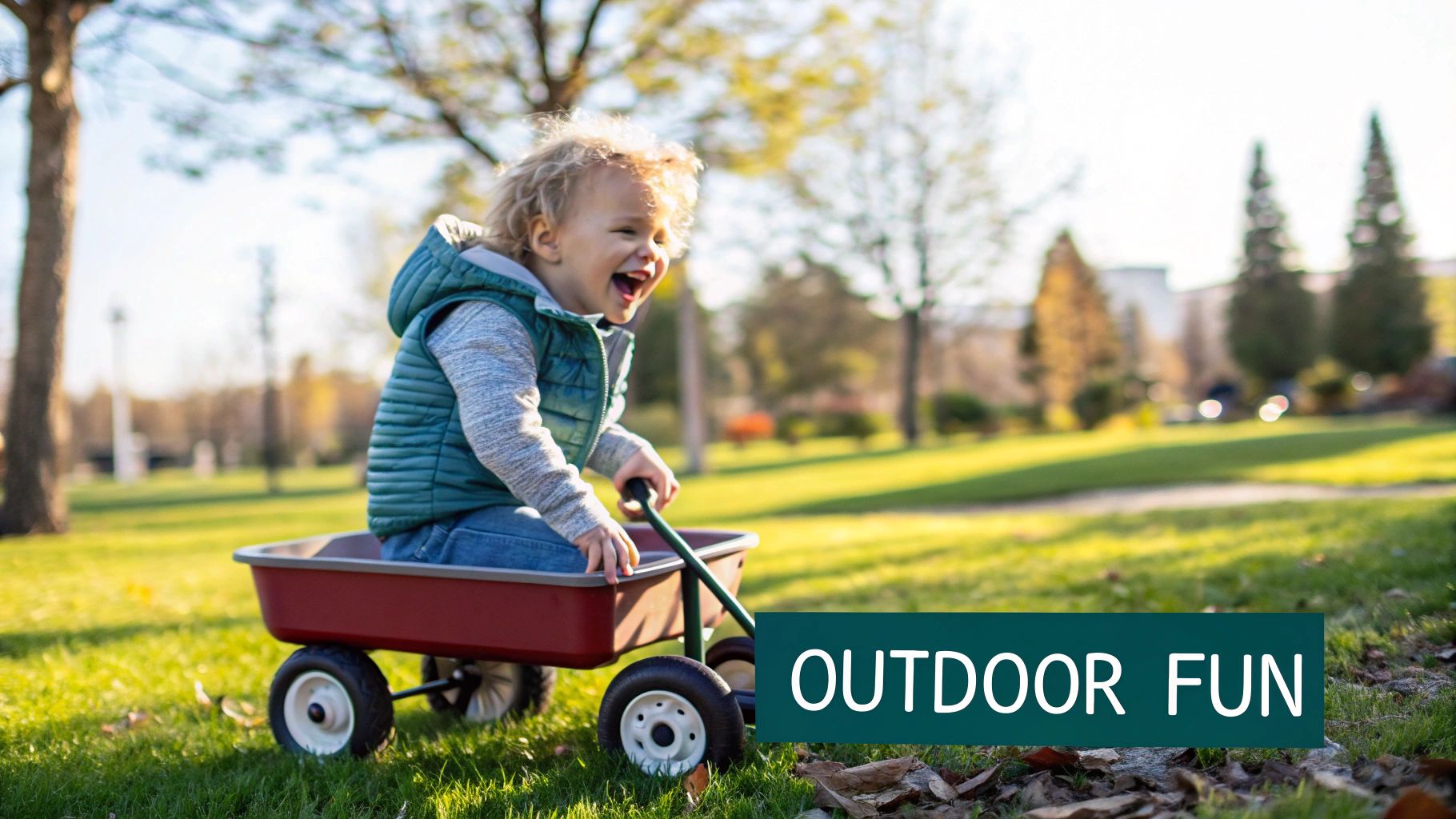
Knowing what’s happening developmentally with your one or two-year-old is like having the map. Now it’s time to choose the best vehicles for their adventure. The world of toys for 1 and 2 year olds can feel a bit much, but if you break it down into a few key areas, it’s much easier to see how each type of toy has a vital role to play in their growth.
Think of it like stocking a kitchen. You don't just have one tool; you have different ones for chopping, stirring, and baking. In the same way, a good mix of toys gives your toddler the right tools to practise all their emerging skills, from solving problems to coordinating their little bodies. It’s not about buying one of everything, but about making smart choices that support them from all angles.
Building Blocks and Construction Toys
Building blocks are the absolute champions of open-ended play. For a toddler, a simple pile of wooden blocks is a universe of possibilities waiting to be discovered. They aren’t just stacking objects; they're tiny architects, engineers, and city planners in training.
Every time they stack a tower, they're getting a hands-on lesson in balance and gravity. Lining blocks up in a row introduces the first whispers of sequences and patterns. And of course, the inevitable crash is a brilliant, joyful lesson in cause and effect. This simple act of building and demolishing strengthens their fine motor skills, hand-eye coordination, and the very beginnings of logical thought.
- For 1-Year-Olds: Stick with large, lightweight blocks that are easy for small hands to grab. They’ll mostly be interested in banging them together and knocking over the towers you build for them.
- For 2-Year-Olds: They might start building simple structures themselves, like a tower of four or more blocks. This is a great time to introduce different shapes to encourage early sorting skills.
Puzzles and Shape Sorters
Puzzles are basically brain-training exercises disguised as fun. When a toddler successfully places a chunky puzzle piece into its correct spot, it's a huge win for their developing mind. It forces them to look at shapes, use a bit of trial and error, and start building their spatial awareness.
This is where you can really see their fine motor skills in action. That pincer grasp they use to pick up a knobbed puzzle piece is the exact same grip they'll one day use to hold a pencil. Shape sorters take this a step further, teaching them that an object still exists even when it's inside the box (object permanence!) and giving them an introduction to basic geometry.
A simple shape sorter is one of the first toys that asks a child not just to do something, but to solve something. It’s a powerful transition from random action to purposeful problem-solving.
This shift towards toys with clear learning benefits is a growing trend. Here in the UK, changing lifestyles and a greater focus on early development have fuelled demand for high-quality, instructional toys. In fact, the UK toy market revenue is now estimated at around £11 billion, with growth expected as families invest in products that support cognitive and physical skills. You can learn more about these UK toy market trends and see what it means for parents today.
Ride-On Toys and Push Walkers
While some toys are busy building the mind, others are essential for building the body. Ride-on toys and push walkers are fantastic for developing those all-important gross motor skills, along with balance and coordination. They also give toddlers a wonderful sense of independence and control over their own movement.
A one-year-old who is just finding their feet can use a push walker for stability and a boost of confidence. As they get closer to two, a low-to-the-ground ride-on toy helps them figure out how to steer and push off with their feet, which is a surprisingly complex challenge. These toys are strengthening their legs and core while they have a brilliant time whizzing around the living room.
Art Supplies and Creative Tools
Unleashing a toddler's creativity can be as simple as handing them a chunky crayon and a piece of paper. Art supplies at this age aren't about creating a masterpiece for the fridge; they’re all about exploration and sensory experience.
Scribbling helps develop hand strength and control, laying the groundwork for writing later on. Finger painting is a fantastic sensory activity, letting them learn about colours and textures in a wonderfully messy way. Even play dough is a developmental powerhouse, strengthening all the small muscles in their hands and fingers as they squish, roll, and shape it. You can explore some creative approaches with our guide on Montessori toys for toddlers, which often focus on hands-on, artistic play.
Pretend Play Props
Around the age of two, a toddler's imagination really starts to take off. Pretend play is how they make sense of their world, practise social skills, and begin to develop empathy. A few simple props can be all they need to kickstart this incredible phase.
- Dolls and Stuffed Animals: These often become their first "friends," giving them a chance to practise nurturing and caring.
- Play Kitchens and Food: Mimicking everyday activities like cooking helps them understand routines and roles within the family.
- Toy Telephones: An absolutely brilliant tool for encouraging language, as they babble away into the receiver, imitating all the conversations they’ve overheard.
By providing a nice balance of toys from these categories, you create a rich environment that supports every facet of your toddler's growth. Each toy becomes a trusted tool, helping them build their body, mind, and imagination, one play session at a time.
Your Guide to Toy Safety and Non-Toxic Materials
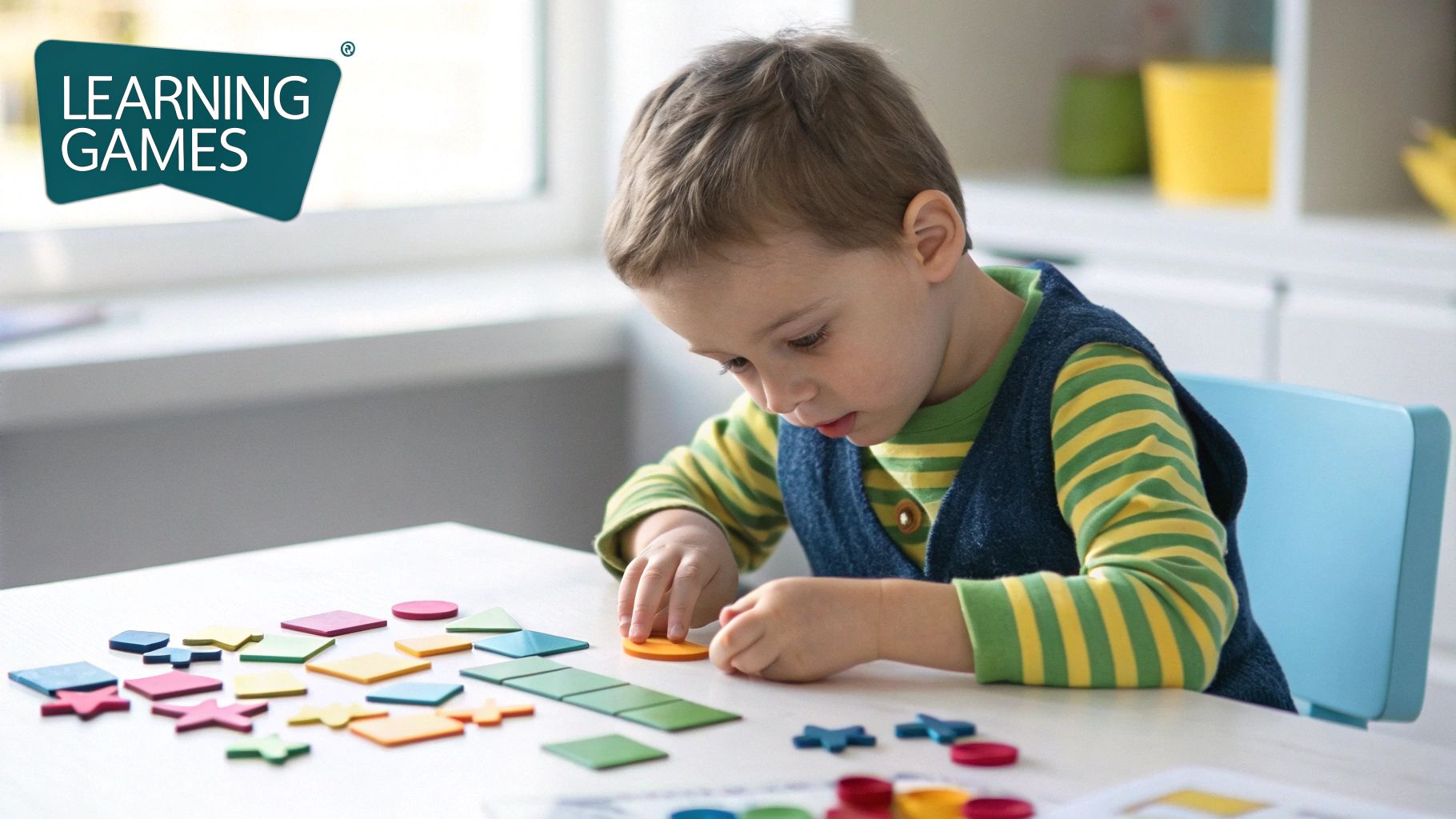
As any parent of a one or two-year-old knows, everything eventually ends up in their mouth. It’s how they explore the world! This makes toy safety less of a nice-to-have and more of an absolute necessity. Choosing the right toys for 1 and 2 year olds means you have to become a bit of a detective, learning to spot hidden dangers and understanding what really makes a toy safe.
This is your practical checklist for total peace of mind. We’ll cut through the jargon around safety standards, talk about the best materials, and even give you a few hands-on tests you can do yourself. By the end, you'll feel confident that every toy in the playroom is ready for some serious, worry-free fun.
Decoding Safety Labels and Standards
When you pick up a toy in the UK, keep an eye out for a UKCA or CE marking. These aren't just random letters; they're your first clue that a toy meets a certain standard. Think of them as a passport, showing the toy has passed the strict safety, health, and environmental rules required by UK and European law.
But these markings are just the starting point. You also need to pay close attention to the age recommendation on the packaging. A toy labelled "3+" isn't just a suggestion—it’s a crucial safety warning. It means it’s been tested for things like small parts, which could be a serious choking hazard for a younger child.
Practical At-Home Safety Checks
Labels are one thing, but a few simple checks at home can give you that extra layer of confidence. These hands-on inspections can catch potential issues that might otherwise go unnoticed.
A classic trick is the "toilet roll tube test." It’s a surprisingly effective way to spot choking hazards. If any toy, or a piece that could break off, can fit entirely inside a standard toilet roll tube, it's too small for a child under three. Simple as that.
Here are a few other things to look out for:
- Sharp Edges or Points: Run your fingers over the entire toy. It should feel smooth, with no sharp points or splintery edges that could cause a nasty cut.
- Long Cords or Strings: Cords longer than 22 cm can pose a strangulation risk. Be especially careful with pull-along toys and always supervise their use.
- Durability: Give the toy a gentle tug and twist. Does it feel solid? A well-made toy won't have loose parts that seem like they could easily pop off and become a hazard.
A toy's safety isn't just about how it arrives out of the box; it's also about its condition over time. Regularly check their favourite toys for wear and tear—like cracked plastic or splintering wood—and don't hesitate to throw away anything that's broken.
The Importance of Non-Toxic and Sustainable Materials
Just as important as a toy’s physical design is what it’s actually made of. Since toddlers are guaranteed to chew on their toys, you want to be sure they’re made from non-toxic materials. This means looking for toys that are free from nasty chemicals like BPA, phthalates, lead, and other heavy metals.
This growing awareness is changing the whole toy industry. The UK market for baby toys is projected to hit around $1.576 billion, and a big driver of that growth is parents demanding eco-friendly and safe options. It shows a real shift towards choosing toys that are good for our kids and the planet.
When you're shopping, here are some fantastic, safe materials to look for:
- FSC-Certified Wood: This certification means the wood comes from responsibly managed forests. Ideally, look for ones finished with non-toxic, water-based paints.
- Food-Grade Silicone: This stuff is brilliant. It’s safe, incredibly durable, and a breeze to clean, making it perfect for teethers and sensory toys for babies.
- Organic Cotton: For teddies, dolls, and other soft toys, GOTS-certified organic cotton is a wonderful choice because it's grown without any harmful pesticides.
By combining an understanding of official safety standards with your own hands-on checks and a focus on high-quality, non-toxic materials, you can build a toy collection that is not only fun and educational but, most importantly, completely safe for your curious little explorer.
How to Match Toys to Your Toddler's Growth Stage
Choosing the right toy at the right time is the secret to unlocking truly meaningful play. Get it right, and a toy can spark a world of curiosity and build real confidence. Get it wrong, and a toy that's too advanced can just lead to frustration. It's a bit like choosing a book – you wouldn't hand a novel to a child who's just learning their ABCs.
The period between one and two is a time of incredible, almost whirlwind, transformation. A one-year-old is a wobbly explorer, totally focused on mastering their physical world. Fast forward a few months, and that same child is an emerging creator, ready to dive headfirst into imagination and problem-solving. By understanding these distinct phases, you can choose toys for 1 and 2 year olds that meet them exactly where they are.
The Emerging Explorer (12-18 Months)
Welcome to the age of action! Between 12 and 18 months, your toddler is on a non-stop mission to move, touch, and figure out how everything works. Their play is incredibly physical and all about cause and effect. They're building the absolute foundations of balance, coordination, and understanding how objects relate to one another in space.
The best toys for this stage are simple, robust, and offer a clear, immediate reward for their efforts. They don't need complex gadgets; they need hands-on tools that support their physical and sensory exploration.
Here are some top choices for this adventurous phase:
- Push Walkers: These are brilliant for building confidence in wobbly new walkers. They offer just enough stability to strengthen leg muscles and improve balance, turning those first hesitant steps into determined strides across the living room.
- Simple Stacking Toys: Think large rings that slide onto a central pole. This simple activity hones hand-eye coordination and introduces the basic concept of size and sequence as they start to figure out how to stack them in order.
- Chunky Knobbed Puzzles: Puzzles with just a few large pieces, each with a big, easy-to-grab knob, are ideal. Those knobs are perfect for small hands, strengthening the pincer grip that’s so essential for writing later on.
At this stage, the goal of play is pure exploration. A one-year-old isn't trying to build a perfect tower; they are discovering the joy of holding a block, the sound it makes when it hits another, and the delightful crash when it all tumbles down.
The Confident Creator (18-24+ Months)
As your toddler barrels towards their second birthday and beyond, you'll witness a remarkable shift. Their physical skills are much more refined, and their cognitive abilities are exploding. They’re moving from simply doing things to pretending. This is when imagination truly takes flight, and they begin using toys to act out little scenarios and solve more complex problems.
Toys for this stage can be a bit more intricate, encouraging pretend play, early logic, and creativity. They’re ready for challenges that require more thought and planning. They're no longer just explorers; they are now the architects of their own little worlds.
Consider these toys to nurture their growing mind:
- Early Jigsaw Puzzles: It’s time to move on from simple knobbed puzzles to chunkier jigsaws with interlocking pieces. This challenges their spatial awareness and problem-solving skills in a completely new way.
- Play Kitchens and Food: A small play kitchen quickly becomes the heart of imaginative play. It gives them a space to mimic the world around them, practise social roles, and develop language skills as they "cook" and "serve" you a delicious (if imaginary) meal.
- Ride-On Toys: With their balance now much steadier, low-to-the-ground ride-on toys are fantastic. They build coordination and serious leg strength as toddlers learn to push themselves forward, stop, and steer around the furniture.
By thoughtfully picking toys that align with these two key growth stages, you can cut through the clutter of endless options. You can be confident you’re investing in things that will not only entertain but also perfectly support your child’s incredible journey of discovery, one developmental leap at a time.
Your Questions Answered About Toddler Toys
Stepping into the world of toddler toys can feel a bit like navigating a maze. As you start putting together a thoughtful collection of toys for 1 and 2 year olds, it's only natural to have questions. This section cuts through the noise to tackle some of the most common worries parents have, from taming the toy clutter to figuring out where electronic gadgets fit in. Think of it as a friendly chat to help you build a smart, sustainable, and genuinely joyful approach to playtime.
It’s easy to feel a little snowed under by the sheer volume of options out there. But with a bit of insight, you can feel confident in your choices and create a play space that truly nurtures your child's growth—without tripping over plastic fantastic in every room.
How Many Toys Does a Toddler Actually Need?
This is the big one, isn't it? The good news is, the answer is refreshingly simple: it's all about quality, not quantity. A toddler gets far more from a small, carefully chosen selection of open-ended toys than from a room overflowing with one-trick ponies. In fact, a cluttered space can be overstimulating, making it hard for a little one to focus and really get lost in what they're doing.
Aim for a balanced collection that ticks a few key developmental boxes. A great starting point would include:
- Something for building: A simple set of wooden blocks is perfect.
- Something for creativity: Chunky crayons and paper are all you need.
- Something for moving about: A push car or a soft ball works wonders.
- Something for quiet time: A few sturdy board books are an absolute must.
A brilliant trick for keeping a small collection fresh is toy rotation. By packing some toys away and bringing them back out in a few weeks, they suddenly feel brand new again. This little strategy stops boredom in its tracks and encourages your child to rediscover the potential in each toy.
Are Electronic Toys with Lights and Sounds Any Good?
Electronic toys can certainly grab a toddler's attention, but it’s best to treat them like sweets—a nice treat in moderation. The toys that do the most for a child's development are often the simplest ones, what we call passive toys. This just means the child has to be the one doing all the work. A wooden block doesn't do anything by itself; your toddler has to supply the action, the story, and the sound effects. This is exactly where imagination and problem-solving skills come to life.
Many electronic toys are designed to entertain, but they can accidentally put your child in a passive role. When the toy does all the flashing and talking, there’s less room for your little one’s own creative thinking. If you do go for electronic toys, look for ones with volume control and a clear purpose that supports, rather than replaces, good old-fashioned, child-powered play.
When Should I Introduce LEGO Duplo or Knobbed Puzzles?
Your first port of call should always be the manufacturer's age guidelines, as these are there for crucial safety reasons. For puzzles, those lovely knobbed versions are fantastic for one-year-olds because the chunky knobs are easy for little hands to get a good grip on. As they get closer to two and their fine motor skills get a bit more refined, they might be ready for chunkier puzzles without the knobs.
LEGO Duplo is generally recommended for children from 18 months onwards. But honestly, the best clue is your own child. Have they stopped putting every single thing in their mouth? Are they showing decent hand-eye coordination? If so, they might be ready to give them a go. Just remember, even with age-appropriate toys, you'll want to be nearby for anything involving smaller parts that could be a choking risk.
What if My Toddler Gets Bored with New Toys Really Quickly?
Don't worry, this is an incredibly common experience! More often than not, the issue isn't the toy itself, but its limitations. The secret is to prioritise open-ended toys—the kind that can be used in a million different ways. A set of blocks, for example, can be a tower one day, a fence for toy animals the next, and pretend "biscuits" the day after that.
If you see their interest starting to fade, the best thing you can do is get down on the floor with them and show them new ways to play. Your engagement is the most exciting toy they own! Show them how the blocks can become a bridge for a car or a little bed for a doll. And above all, don’t forget that toy rotation is your best friend. Popping a toy away for a few weeks is the single most effective way to make it feel exciting all over again.
Ready to build a purposeful and engaging toy collection without the guesswork? The play kits from Grow With Me are perfectly matched to your child's developmental stage. Discover your first curated box today and bring home toys that are designed to grow with your little one.
